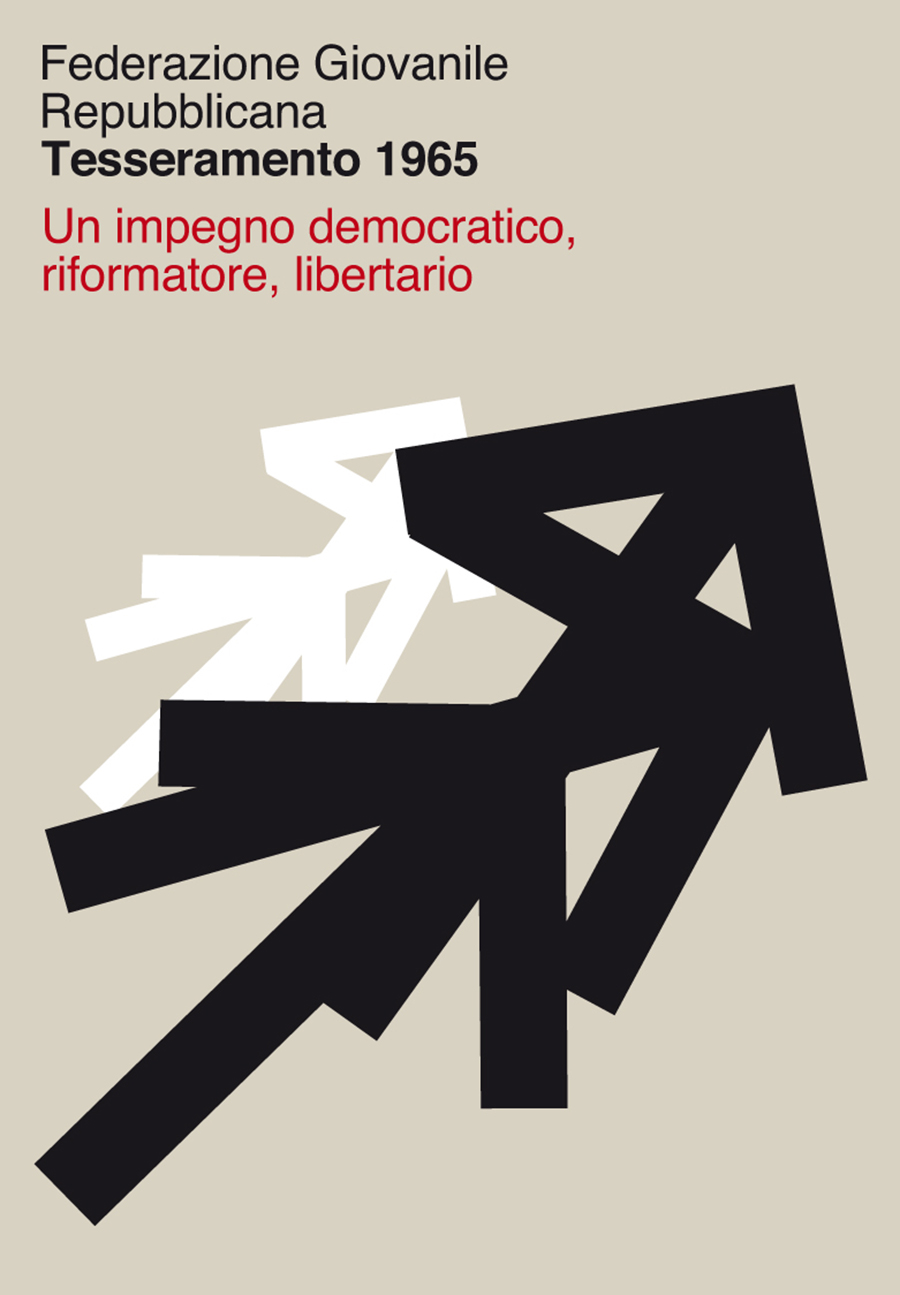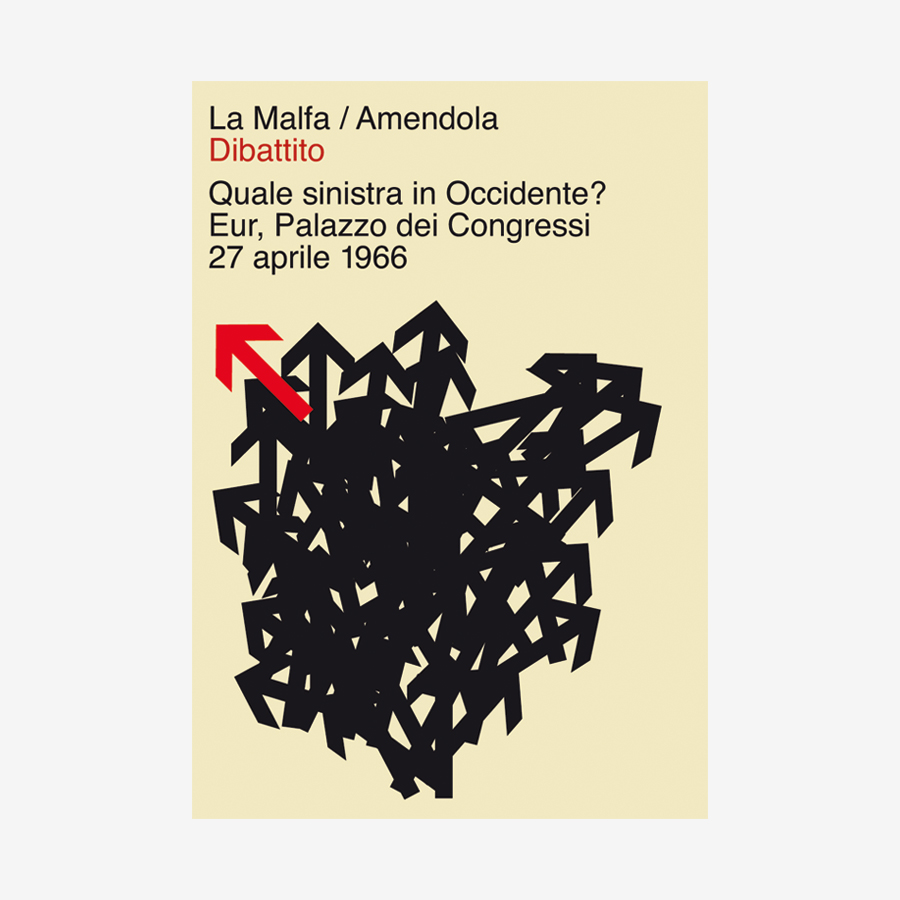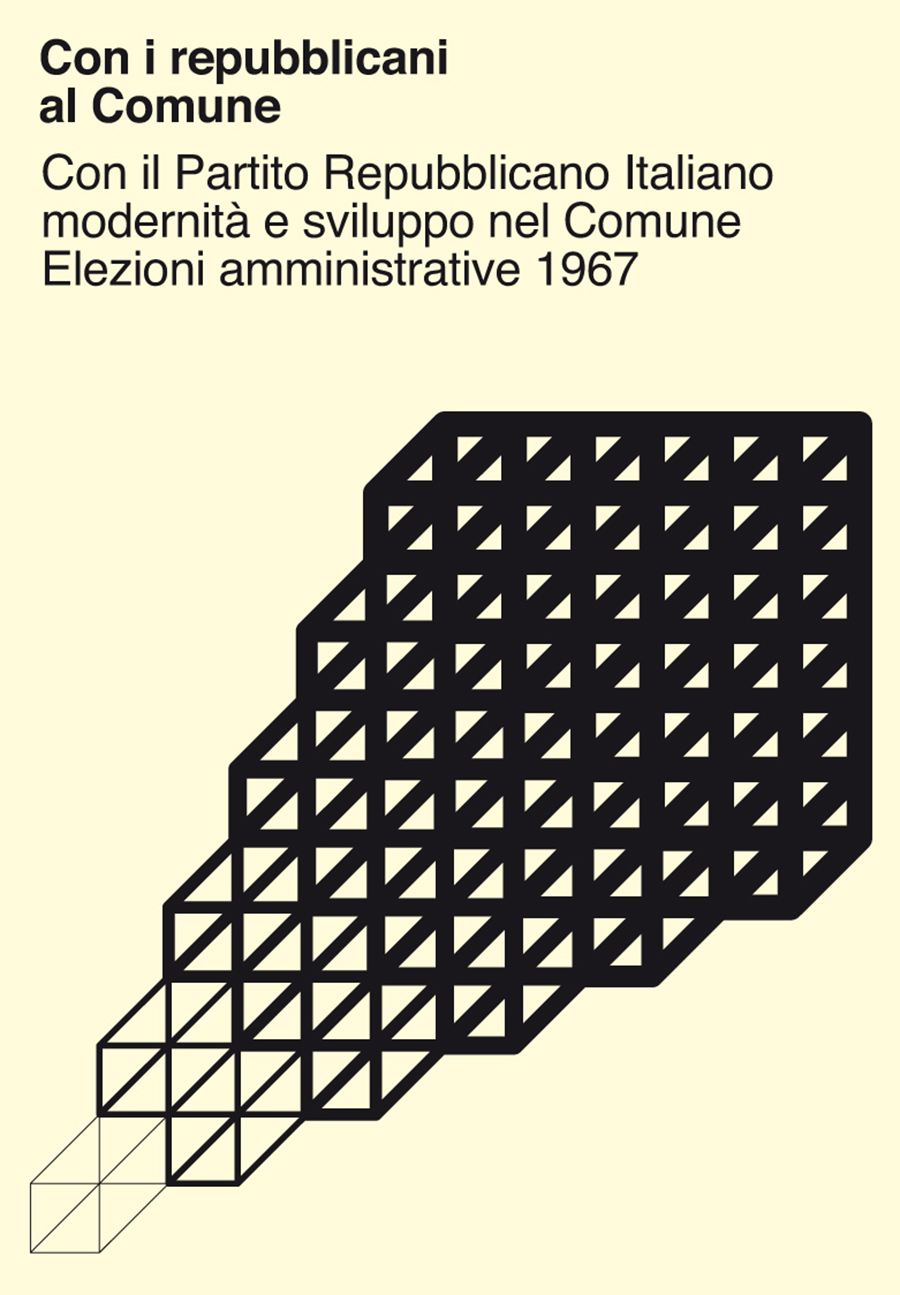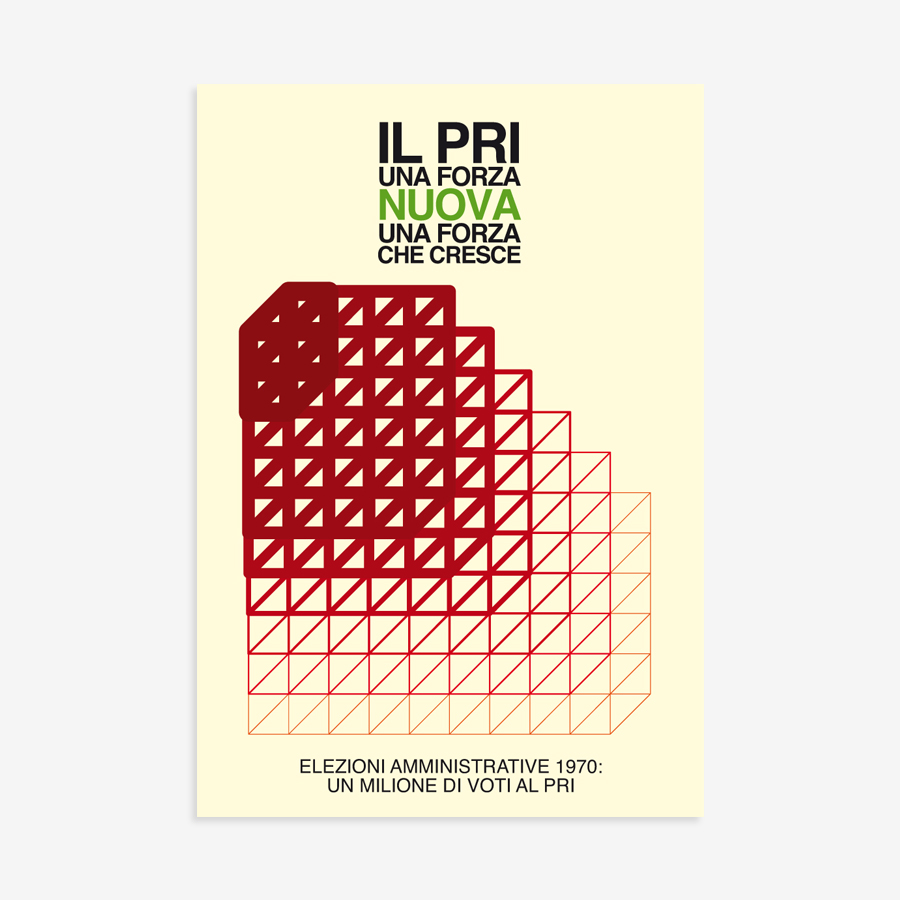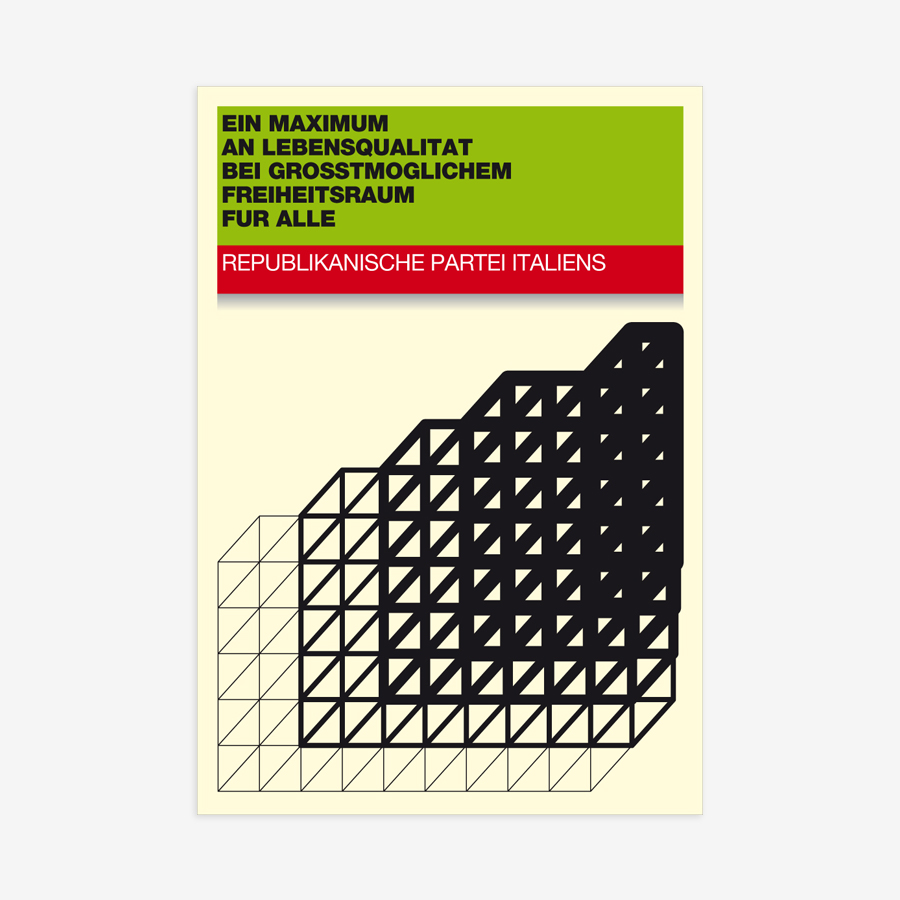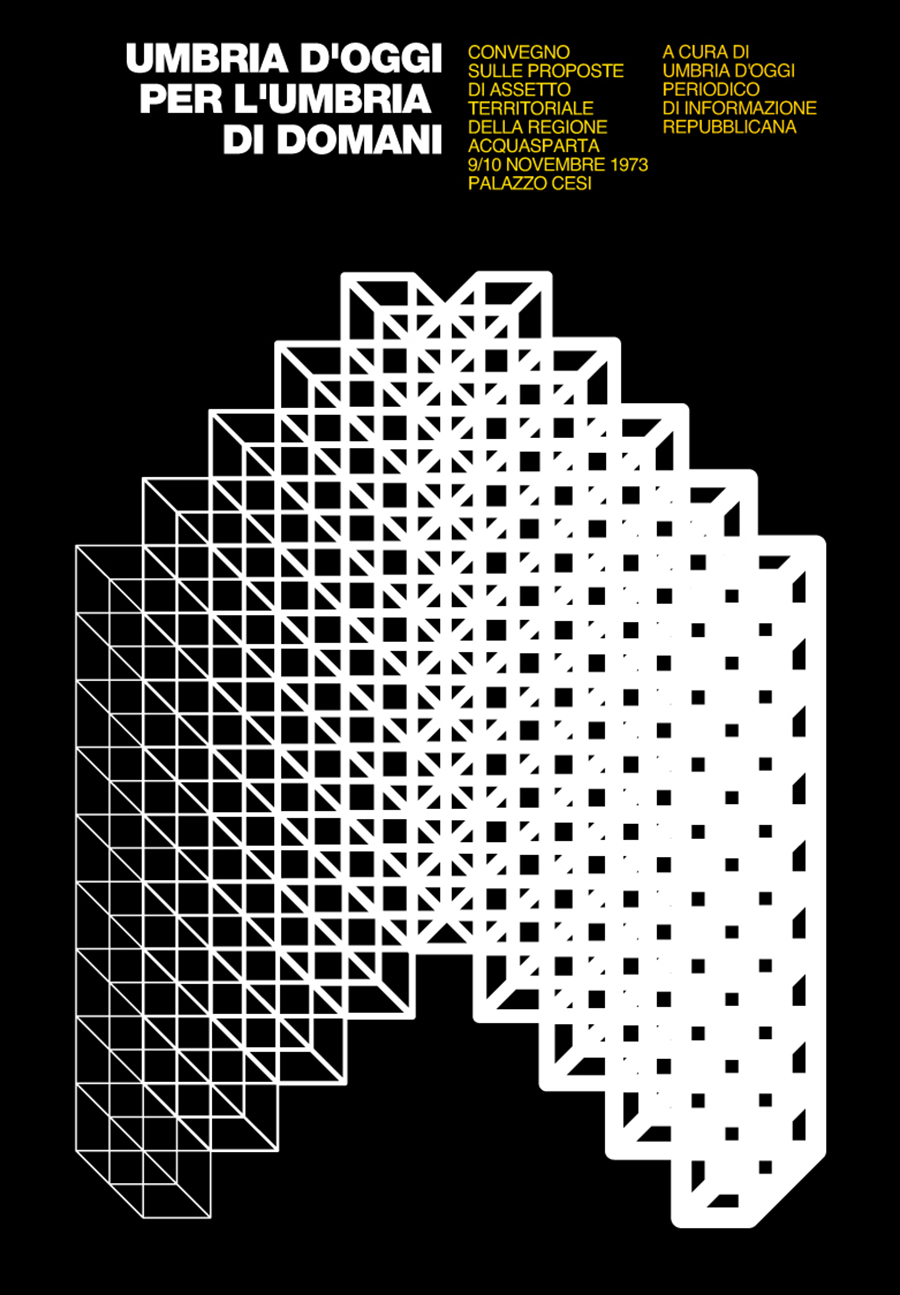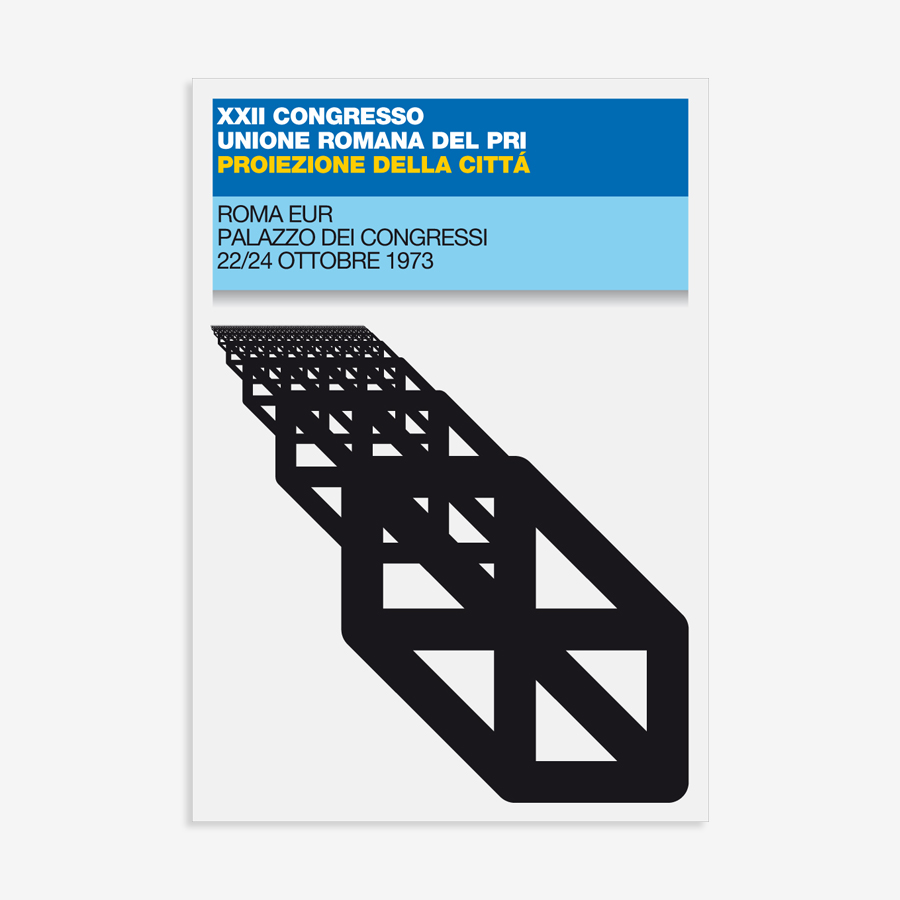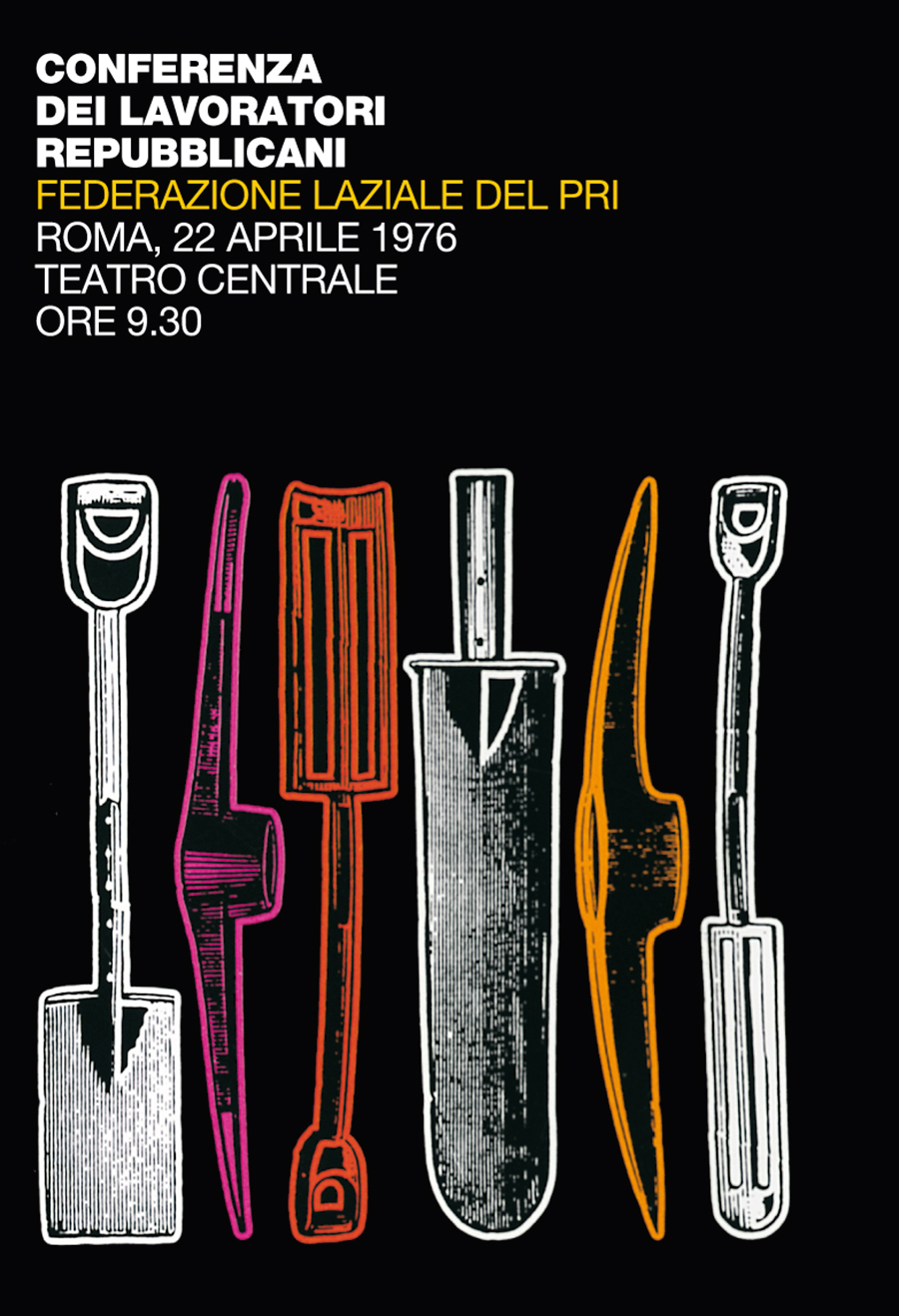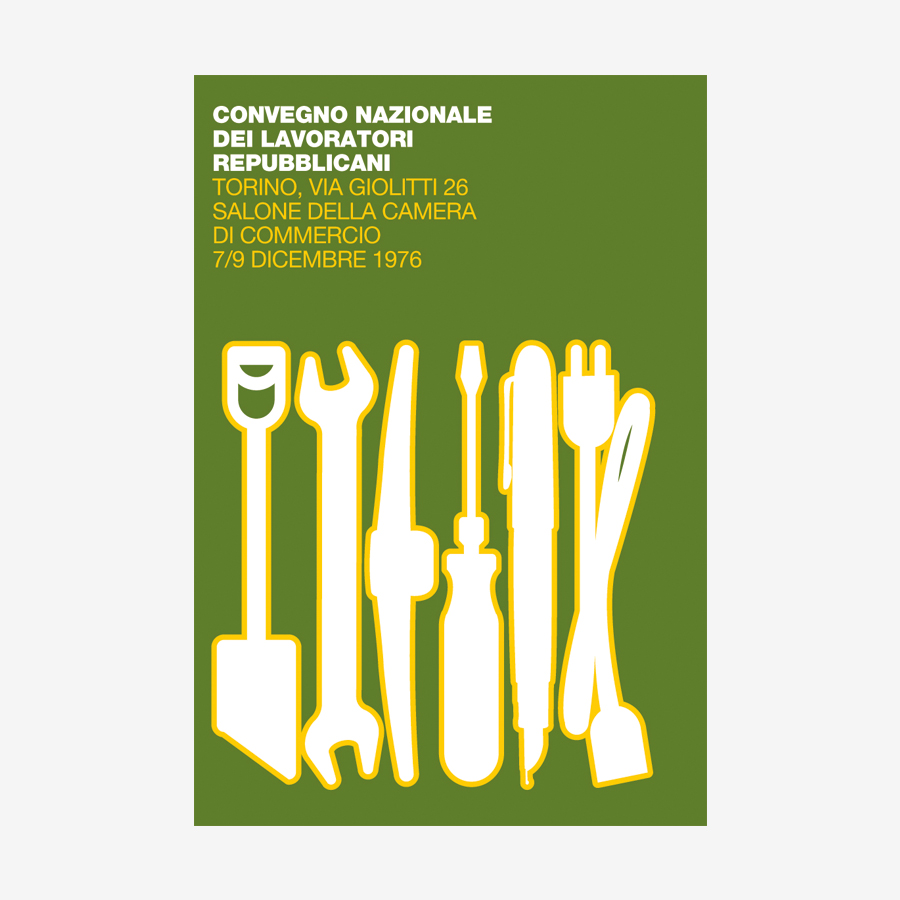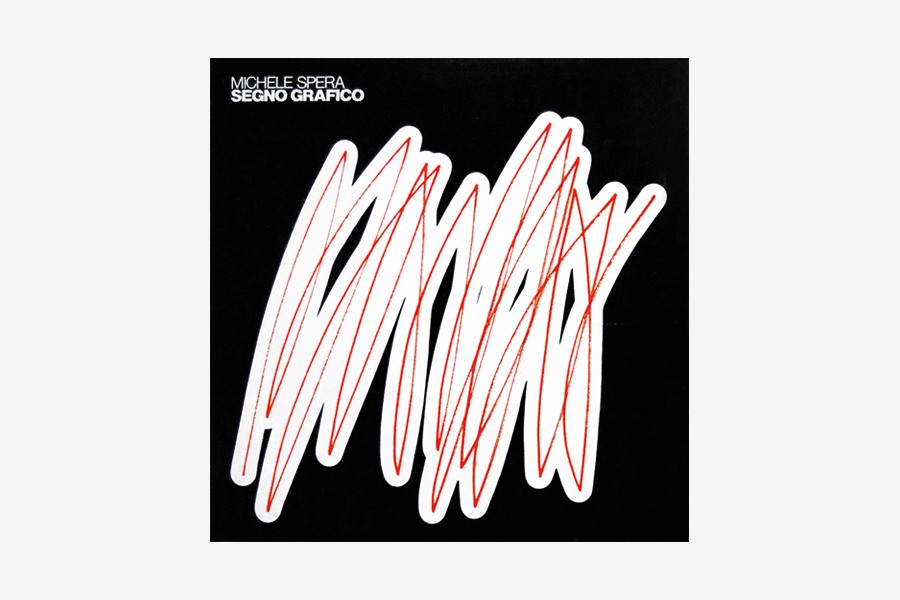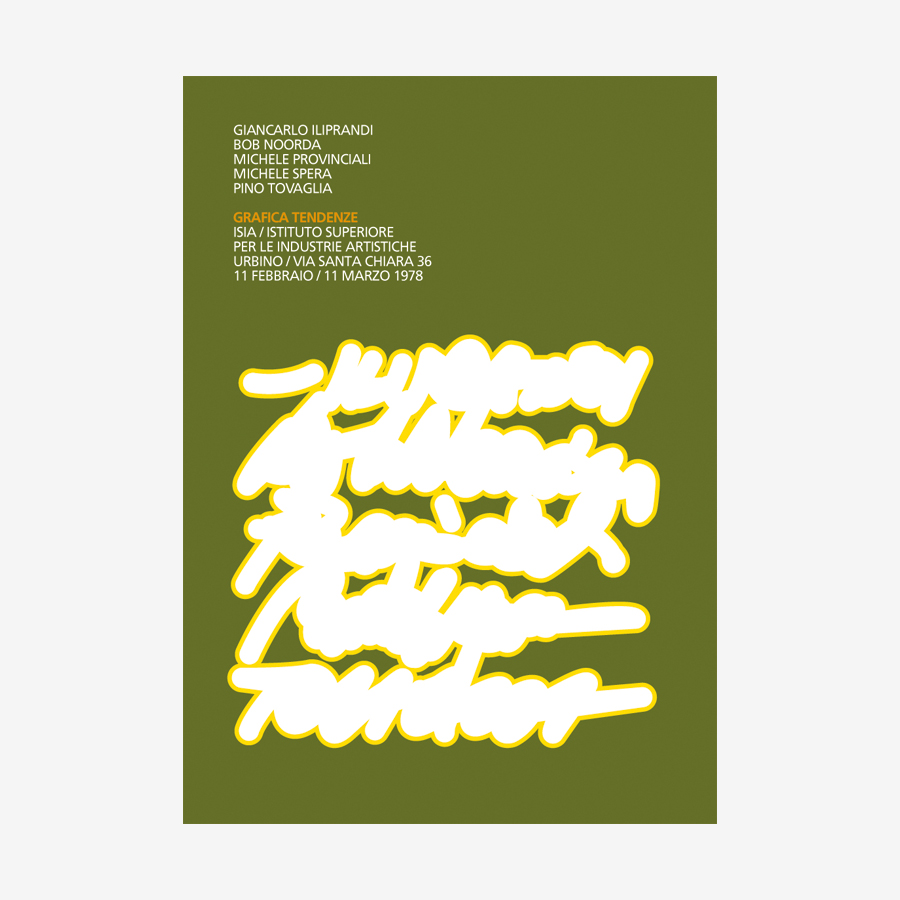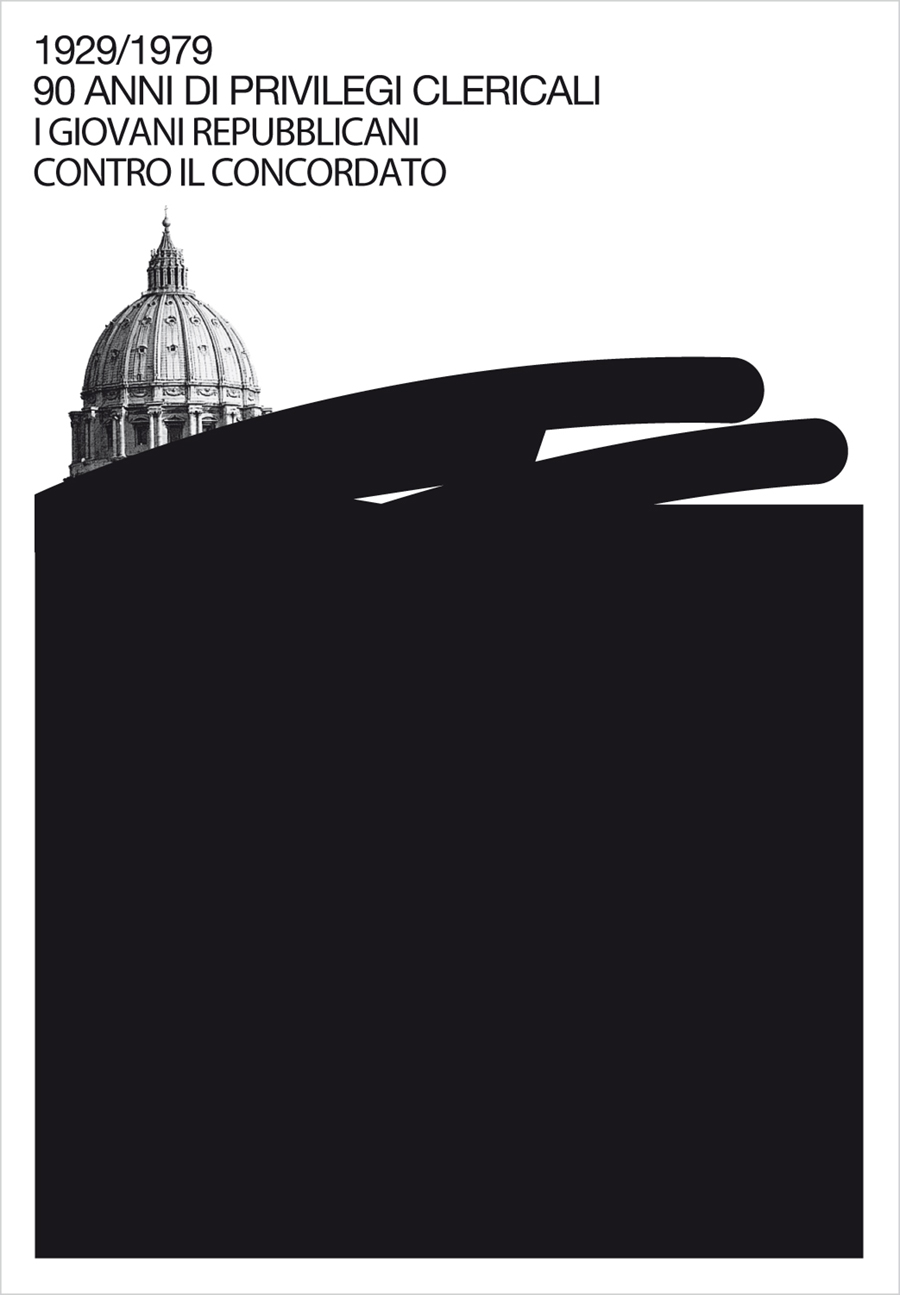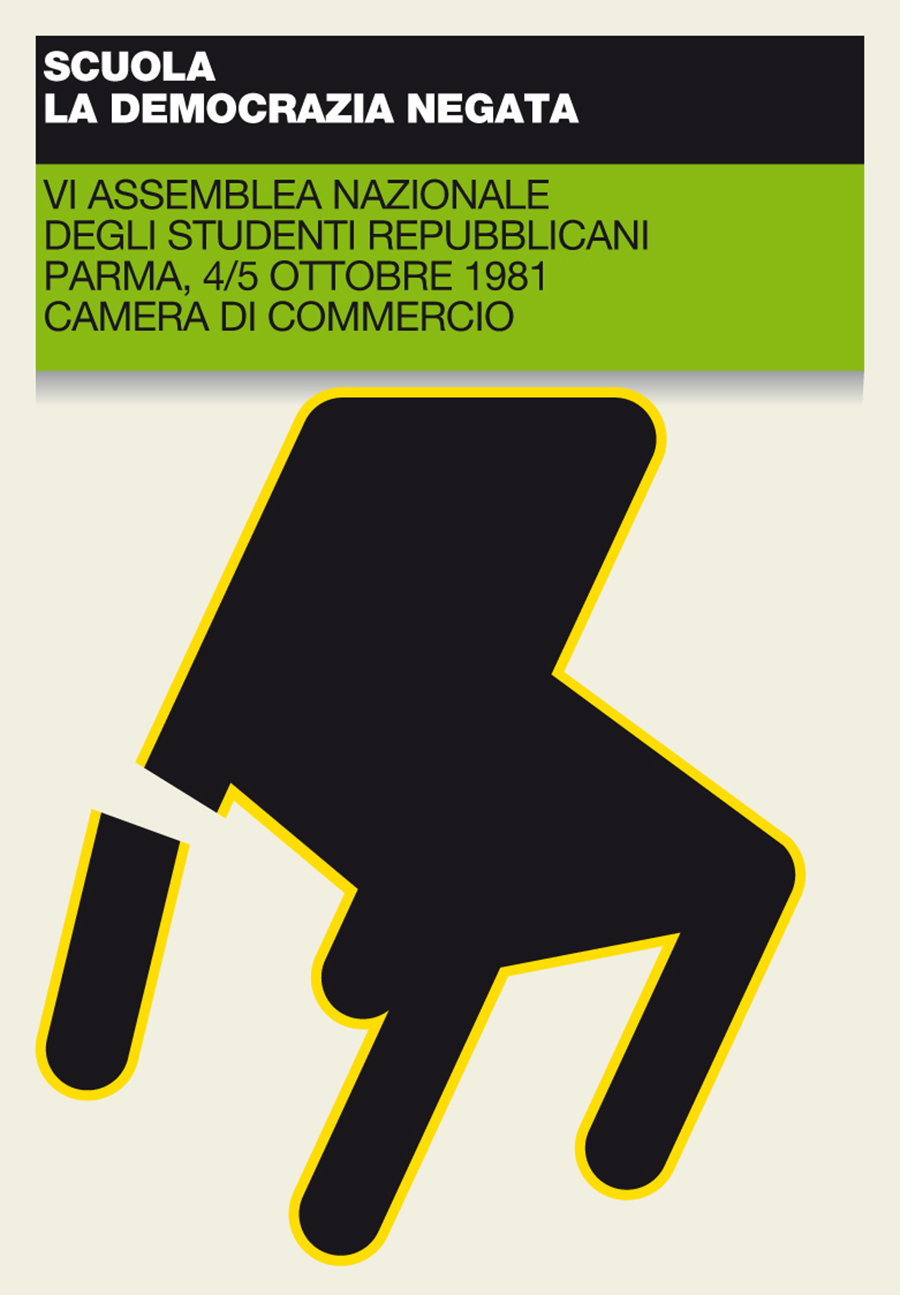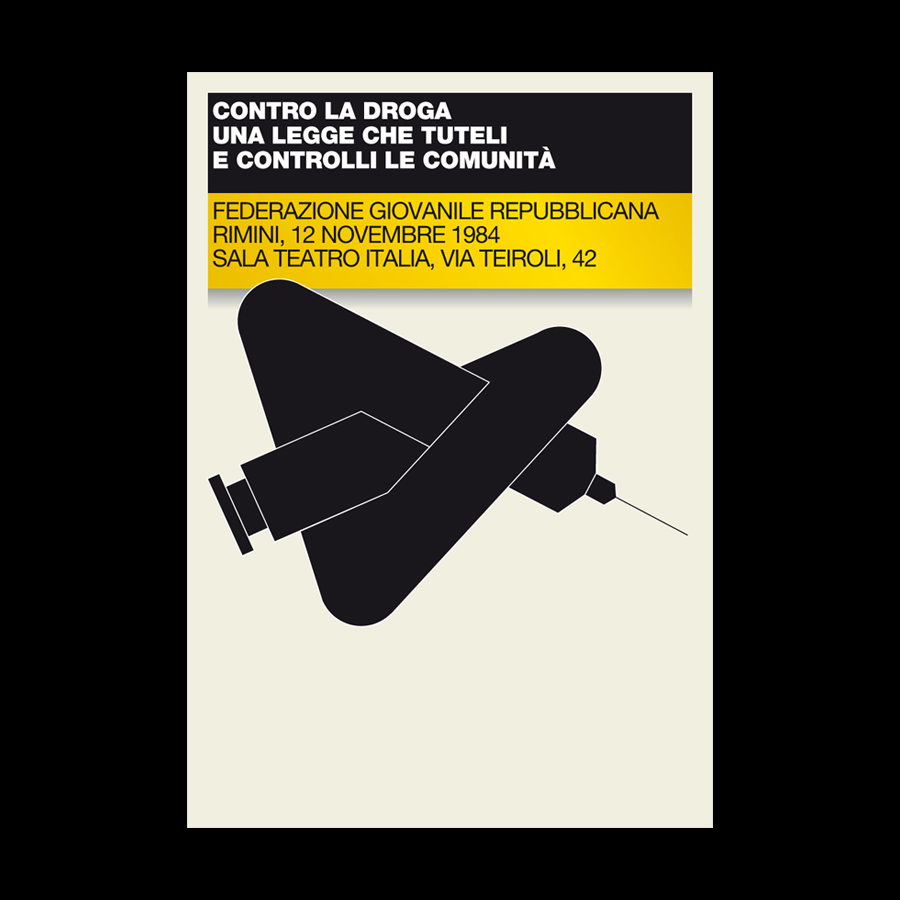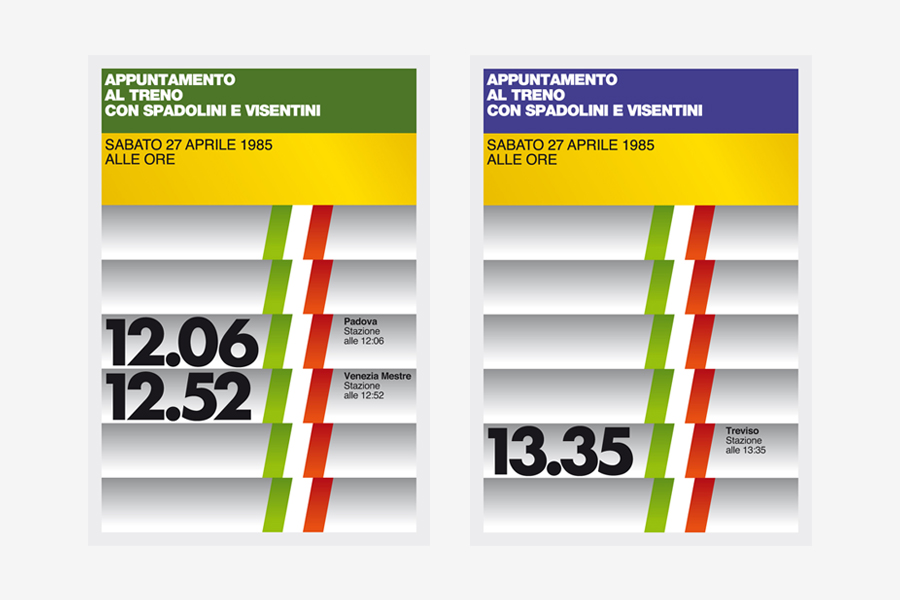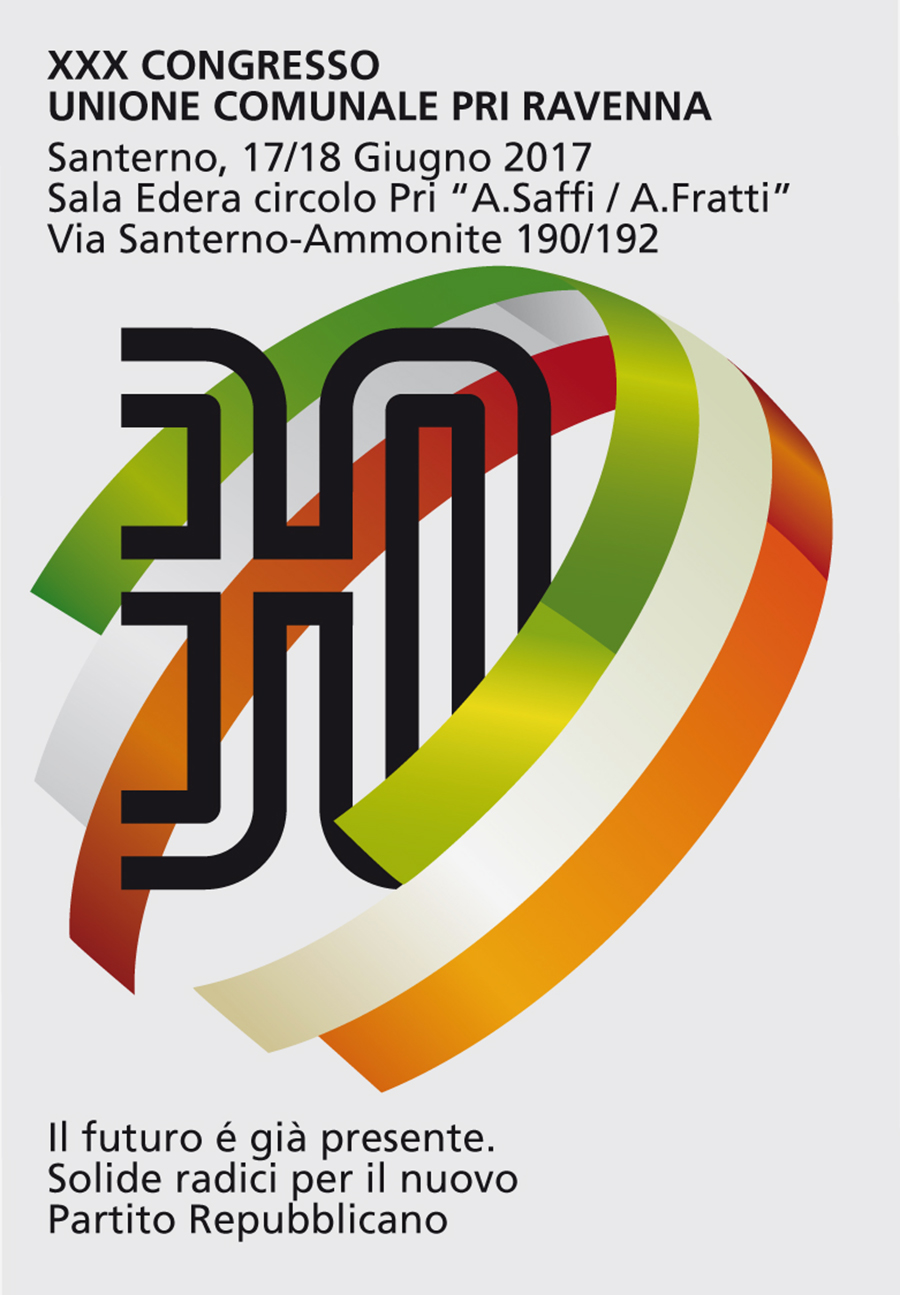Michele Spera
Potenza, 1937
Who’s Who
Michele Spera is an acclaimed Italian graphic designer.
He was born in 1937 in Potenza, Basilicata. After studying architecture in Rome, he started to design the corporate communication of the Italian Republican Party, dedicating himself to this task from 1962 to 1995. For the Party, he developed an identity system that was strongly original thanks to both its unifying consistency, its rigorous style, and characteristic iconography (e.g. he never used portraits of politicians's faces).
During his career, he designed many trademarks including that of Innocenti and Maserati cars, and worked for major corporations including Confindustria and RAI (Italian national public broadcasting company). From 1974 to 1995, he also worked as an art director at Treccani, the Institute of the Italian Encyclopaedia.
Member of the scientific committee of the Industrial Design Centre in Montevideo, 1990. He taught packaging at ISIA of Rome (High School for Artistic Industries), 1969-72, and coordinated image at ISIA of Urbino, 1976-78. Since 1997, he teaches industrial design for visual communication at Sapienza University of Rome.
A true promoter of graphic design’s culture, he published many books about this discipline, his work dealing with socio-political issues, and his teachings.
With his geometric style made of modules and lines with rounded edges — the result of a technical intuition that demonstrates the originality and the strong experimental nature of his work — Spera managed to anticipate the characteristic language of graphics drawn with the computer which would only be revealed a few decades later.
Enjoy your reading,
 TO THE TOP ↑
TO THE TOP ↑
Quotations
“An interpreter of our youth, inspired by the ethics of responsibility and civil passion,” Alessandro Cecchi Paone.
He used marks and symbols in an instrumental way to aesthetic creativity and political information (Gillo Dorfles).
Michele Spera has created a world of rational shapes that prefigure a conscientious world. He has accomplished an authentic educational mission (Carlo Ludovico Ragghianti).
Michele Spera has powerfully served to the Italian Republican Party to declare its modernity, taste, and moral elegance (Ugo La Malfa).
Probably, the work of Michele Spera represents the most relevant example of collaboration between graphic design and an institution (Giovanni Anceschi).
Spera gave us the most rational graphic shapes of these decades. His posters for the Italian Republican Party represent a most imitated but unequalled style (Massimo Bucchi).
Alessandro Cecchi Paone (1961) is a journalist and television presenter.
Gillo Dorfles (1910) is a renowned art critic, painter and philosopher.
Carlo Ludovico Ragghianti (1910-1987) was a politician, historian, and art theorist.
Ugo La Malfa (1903-1979) was a politician, secretary to the Italian Republican Party.
Giovanni Anceschi (1939) is a graphic designer.
Massimo Bucchi (1941) is a cartoonist.
Quotations without marks are freely translated from Italian.
TO THE TOP ↑
Q&A
Published February 20, 2018
Recorded January 22, 2018
What is your definition of design?
Design improves the human spirit by educating it to beauty and by promoting cultural models that add quality to life.
Does graphic design is part of your general definition of design?
Yes, I think so. But in graphic design, beauty should be combined with both emotional contents and that rationality that we have inherited from the great masters of the past, who cultivated it with discipline and passed it to the rest of humanity and to future generations.
Do you think that there is a methodic difference between architecture, graphic design, and product design? Or do you think that the methodology of design is always the same, independently from the field of its application?
The purpose of design is always the same, but methodology should respond to the specific needs of each discipline.
What is the purpose of design? What is its utility?
Design produces enjoyable shapes, images, and objects without imposing them. It satisfies a wide range of wishes without preventing free thinking. Design should be conceived as the possibility to think and to experiment a way of life based on introspection, culture, ethics, and aesthetics. A way of life free from delirious competitiveness and free from bad taste.
You have studied architecture. Do you think that studying architecture has been important, or fundamental for your activity as a graphic designer?
When I have studied architecture at Sapienza University of Rome, design wasn’t part of the study program.
[N.B. The first design school to be founded in Italy, the Scuola Politecnica di Design, was founded in 1954 but it was only in 1993 that industrial design became a degree course at the Faculty of Architecture of Milan Politecnico. And it was only in 2000 that the first academic Faculty of Design in Italy was established with subsequent courses in communication design. While only in 2008-10 design degrees by private schools such as SPD, NABA, and IED received a legal recognition.] So, I consider myself a self-taught in design. Somehow, I have studied with those people who were my great masters: Leonardo Sinisgalli, Libero De Libero, Alfonso Gatto, Carlo Levi, and many others, who also were friends of mine. They taught me beauty.
Leonardo Sinisgalli (1908-1981) was a renowned poet, writer, and art critic.
Libero De Libero (1903-1981) was a poet and art critic.
Alfonso Gatto (1909-1976) was a poet and writer.
Carlo Levi (1902-1975) was a renowned writer, painter, and anti-Fascist politician.
What are the essential qualities that a project of good design should possess?
Form and content, emotion and reason, fantasy and rigour. But quoting Umberto Eco about social networks, I think that the computer ruined collective taste by giving rights to the non-professionals.
While what are the constant features of your graphic design?
To render every element of the communication as a symbol. In fact, it is not by chance that there are only a few photographs in my posters. I always try to reinterpret photographs by using a pure graphic connotation. (The most essential shapes are objects, abstractions of objects, structures of the real.)
Can design be art?
Maybe. Indeed, some of my serigraphic drawings are part of national museums’s collections.
[N.B. Actually, we should distinguish between drawings with a more aesthetic value and works of graphic design with a more practical value.]
You have designed the communication of the Italian Republican Party for many years. In this case, what was your aim as a designer? What did you want to produce?
In 1962, I was appointed corporate designer of the Party by Ugo La Malfa (secretary to the Party). My goal was to produce a coordinated global image that could be distinguished by the electors in all of its applications. I proposed that all the Party’s communication — independently from the content — should be expressed with an identical graphic manner, thus to let it become the image itself of the Party. You could recognize the posters of the Party even before reading their verbal content
[N.B. Also before reading the name of the party itself.] This communicational imprint was ideal to the enlightened men who represented the party, who all embraced my proposals and never criticized my work.
Do you think is it possibile, or inevitable to have a personal style in design?
To Fabrizio Cicchitto, then coordinator of the Socialist Party who asked me to design their corporate identity, I answered that I couldn’t design something good for the socialists too because their communications would have been inevitably interpreted like that of the Republican Party that I formerly designed.
Do you think that the popular circulation of many graphic design artefacts implies a civic responsibility by the designers?
In an article published by La Repubblica newspaper, Massimo Bucchi wrote that in my graphic work geometry becomes image, thus suggesting a vision of the world where aesthetics represents social commitment.
[N.B. The quote has been changed to make it more comprehensible. The literary translation of the original Italian phrase is the following: “A graphic work in which geometry becomes image, the detail refers to a general structure that is already a vision of the world, in a sort of final visionary in which aesthetics becomes a vital commitment.”]
Why did you choose to become a graphic designer? What job did you wanted to do in the future as a child?
My first encounter with graphic design was at Quinto Orazio Flacco High School in Rome. I redesigned all the ugly covers of my school books. At that time, I wasn’t aware of the graphic design profession. It was my dear friend and classmate Nino Calice — the best in the class, and later senator of the Italian Communist Party — who told me that I would have to be a graphic designer.
Is there anyone whose work or thoughts you particularly admire? Or someone who influenced your activity as a designer?
Once, I frequented one bookshop only, Vito Riviello’s bookshop in Potenza. In the shop, there was a basement where I met with other intellectuals from Potenza and guests like Manlio Rossi Doria, Ignazio Gardella, Pannunzio, Compagna, Ciranna, and many others. Then, I finally went to Rome! I lived with poet Vito Riviello in a tiny apartment at Piazza dell’Orologio, right under Borromini’s tower. At that time, I had guests such as Libero De Libero, Leonardo Sinisgalli, Alfonso Gatto, Giacomo Porzano, Bruno Caruso, Carmelo Bene, Dacia Maraini, Carlo Levi, Licisco Magagnato, and Domenico De Masi, who once wrote: “I came in touch with Michele Spera’s graphics when I was working at Nord e Sud, the magazine of Francesca Compagna (…) The perfect images of Michele Spera, and that of Olivetti and Italsider too, were completely different by the graphics of all the other groups, parties, and entrepreneurs.” These were the people who taught me to live.
Francesco Borromini (1599-1667) was a Baroque architect.
Manlio Rossi Doria (1905-1988) was an economist, politician, and educator.
Ignazio Gardella (1905-199) was an acclaimed architect, engineer, and industrial designer.
Mario Pannunzio (1910-1968) was a journalist and politician.
Francesco Compagna (1921-1982) was an Italian Minister, politician, and educator.
Corrado Ciranna (?) is a a publisher.
Giacomo Porzano (1925) is a painter.
Bruno Caruso (1927) is a painter, engraver, and writer.
Carmelo Bene (1937-2002) was an acclaimed actor, director, playwright, and poet.
Dacia Maraini (1936) is a renowned writer, poet, playwright, and screenwriter.
Licisco Magagnato (1921-1987) was an art critic.
Domenico De Masi (1938) is a sociologist.
For others, see above.
What do you think is your strongest skill as a designer?
Consistency, perseverance, and humility.
What is the importance of experience? How it can contribute to design?
When experience is matched by invention you have no boundaries. During the early 1960s, I passed hours in typography to prepare printed matters for the Republican Party. Once, while I was working in the dark room, I noted that the photographic enlarger blurred a little bit the drawings if I superimposed two different colours. Then I understood that I could trace drawings with rapidograph [technical pen], make a negative of it, and project it on an orthochromatic film. The more I blurred the more lines became larger and edges rounded. From this discovery, I started my production of signs, logos, and images featuring an unusual characteristic: the enlargement of lines. And that, anticipating for years what would later be possible with the use of the computer.
What is the role of graphic design in contemporary society?
The role is quite unclear. Clients lack of culture more than ever and the dialogue becomes difficult. I pushed my students to cultivate an innovative approach to the institutions, the State, and ministries, that should all feel the need for clarity in their corporate communications to improve their relationship with citizens. This is the real challenge for the new generations of graphic designers: to bring clarity to bureaucratic communication.
You have dedicated a lot of yourself to teaching. What is the most important thing for a student of graphic design to learn?
My teaching was driven by one single approach, i.e. that the aesthetic emotion should be produced by the logic. Consequently, I didn’t train graphic artists but graphic designers who learned the technique, methodology, history, and culture; [we can call it] the science of the craft
[N.B. The Italian for craft, “mestiere”, doesn’t necessarily imply manual labor.] Actually, I think it is of paramount importance to learn the basics before you can break the rules. But when that finally happens, it means that the teacher has completed his role.
How many books did you write and why you did it?
There is a moment when you need to stop and to think about your life, your work and your experiences. Then you understand that you need to explain — also to yourself — why and how you have created that images. Basically, you need to search for the reasons behind your sings and your geometry, so to decode your entire career. This is why, over the years, I have written several publications about myself, graphic design, and my lessons at the university.
Thank you very much.
Thanks.
© 2018 Michele Spera, Nicola-Matteo Munari. All rights reserved.
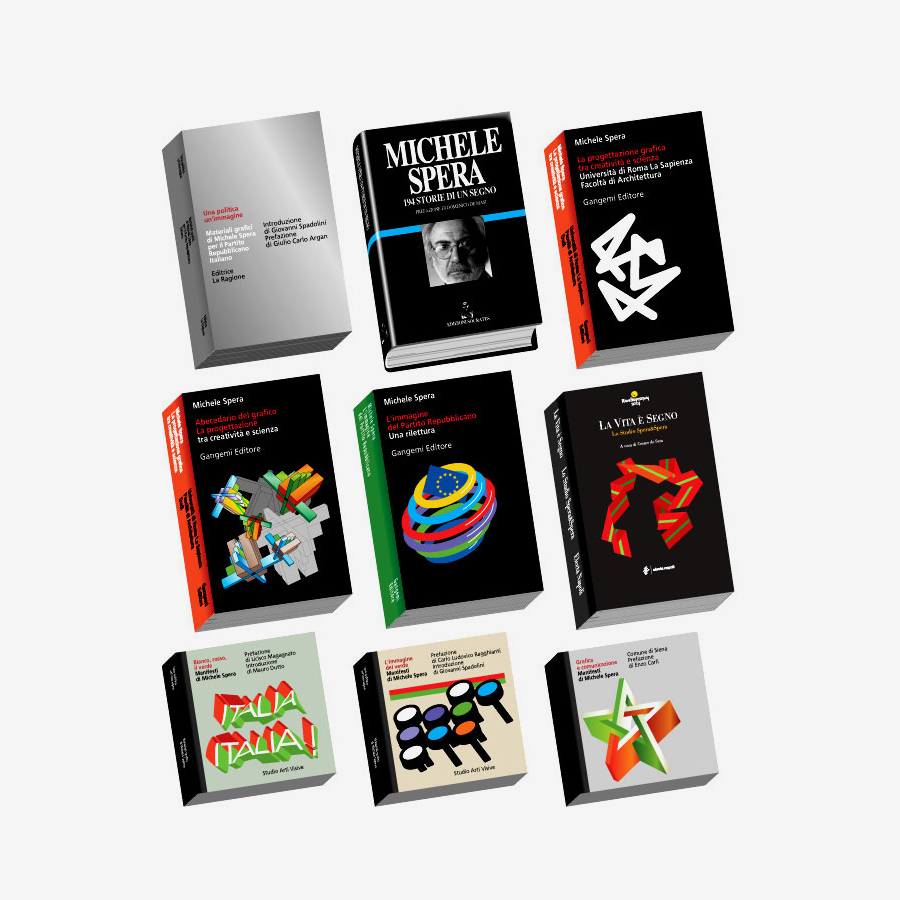 Some of the numerous books written by Michele Spera.
Some of the numerous books written by Michele Spera.
TO THE TOP ↑
Portfolio
N.B. All the posters illustrated on this page have been entirely redrawn with the computer by Michele Spera on the basis of his sketches, so they shows discrepancies with the original pre-computer design.
Tesseramento
1965
Poster for the Republican Youth Federation featuring a series of arrows producing a dynamic movement that invites to take action.
Dibattito
1966
Poster for a debate titled “What kind of Left-wing politics in the West?” A series of black arrows pointing in all directions and one red suggest the idea of debate and diverging opinions.
Con i repubblicani al Comune
1967
Poster of the Italian Republican Party promising modernity and development. A series of triangle modules based on square give up to one big arrow whose direction is emphasized by the increasing thickness of the lines.
Una nuova forza che cresce
1970
Poster for the elections titled “Italian Republican Party (PRI), a new force that grows.” The same modules of the previous posters are here arranged in a way to suggest the idea of a growing structure.
Republikanische Partei Italiens
1973
Poster for the political elections at Italy’s German speaking city Bolzano. The text says: “A maximum of quality for life with the greatest possible freedom for all.” The same graphic solution of the previous poster but with different orientation and colour.
Umbra d’oggi per l’Umbria di domani
1973
Poster for a symposium about the community amenities of Acquasparta, Umbria. The title says: “Today’s Umbria for the Umbria of tomorrow.” An elegant poster printed in black and white with yellow accent. The modules generate the illusion of three-dimensions giving shape to an arrow structure, that somehow seems a building facade.
XXII Congresso Unione Romana
1973
Poster for the 22nd Congress of the Italian Republican Party’s section of Rome. The poster titles “Projection of the city” and the modules form an arrow projected toward the viewer.
Conferenza dei lavoratori repubblicani
1976
Poster for a conference of Republicans labourers. Here Spera adopted a different iconographic language by using old figurative engravings of labourers’s tools.
Convegno nazionale dei lavoratori repubblicani
1976
Poster for the national meeting of Republican labourers at Turin, Piedmont. The tools featured in the previous posters and other objects become silhouettes, “abstraction of objects”.
Segno Grafico
1977
Catalogue for a personal exhibition titled “Graphic Sign,” where the line itself — actually, the graphic sign — becomes the protagonist of the cover.
Grafica Tendenze1978
Poster for an exhibition displaying works of Giancarlo Iliprandi, Bob Noorda, Michele Provinciali, Pino Tovaglia, and Michele Spera himself. The poster features the signatures of the five designers that Spera photographically thickened and rounded, according to his typical graphic technique, described in the interview published on this page.
Source:
Archivio Grafica Italiana
90 anni di privilegi clericali
1979
Poster about the Republican Youth against the concordat titled “90 years of clerical privileges.” The resentment against the Church’s privileges is effectively communicated by a black line, freely drawn, that covers the Papal Basilica of St. Peter in the Vatican at the point of making 3/4 of the poster surface completely dark.
La democrazia negata
1980
Poster for the national meeting of Republican students at Parma, Emilia-Romagna. The failure of democracy’s purposes for the school is represented by a chair with a broken leg.
Contro la droga
1987
Poster promoting a law protecting against drugs representing a knotted syringe.
Appuntamento al treno
1985
Two posters from a series designed for Republican meetings at various train stations in Italy.
XXX Congresso PRI Ravenna
2017
Poster for the 30th congress of Italian Republican Party’s section of Ravenna, Emilia-Romagna. The figure 30, shaped by a black line, is placed within a ‘tricolore’ (Italian flag) ribbon.
Links & Docs
Spera Design Official Website
Wikipedia Italian Republican Party
TO THE TOP ↑
Comments
If you wish to add a comment please feel free to write at
info@designculture.it
TO THE TOP ↑
Follow on Facebook
Partnerships

Archivio Grafica Italiana is the first digital resource to the Italian graphic design heritage. Founded by Nicola Munari in 2015.

Design consultancy based in Piacenza, Italy. Founded by Nicola Munari in 2015, it operates in the whole field of design.
TO THE TOP ↑
© 2013-18 Nicola-Matteo Munari. All rights reserved.

 Some of the numerous books written by Michele Spera.
Some of the numerous books written by Michele Spera.